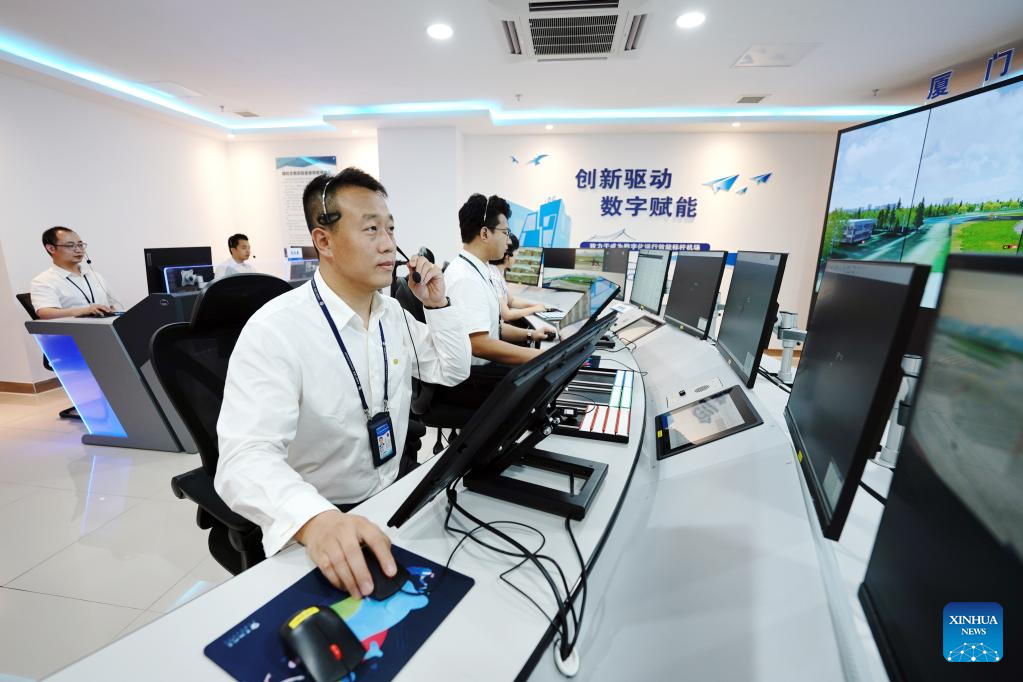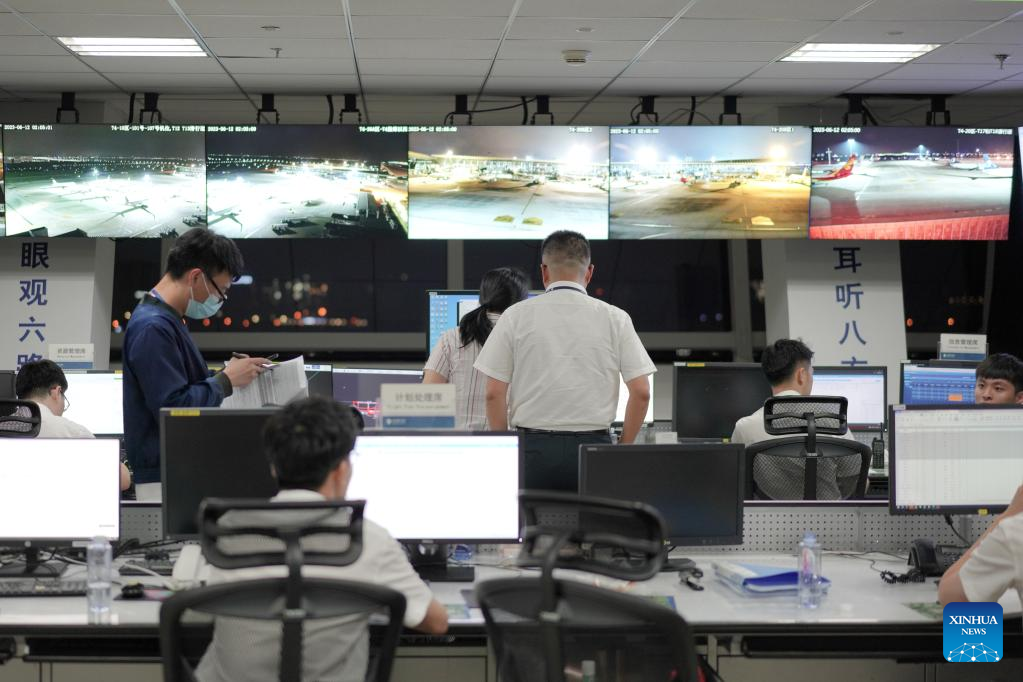
Staff members work with an integrated digital operation system at Xiamen Gaoqi International Airport in Xiamen, southeast China's Fujian Province, July 26, 2022. (Xiamen Gaoqi International Airport/Handout via Xinhua)
by Xinhua writers Hu Tao, Fu Min
XIAMEN, June 13 (Xinhua) -- Digitalization is speeding up the high-quality progress of a busy hub airport in east China's Xiamen, located in the core area of the 21st Century Maritime Silk Road.
Digital technologies have been comprehensively integrated into the safety and operation management of Xiamen Gaoqi International Airport, an important regional aviation hub on the southeast coast of China, according to the airport.
"Digital technologies are empowering the airport with an integrated digital operation system that coordinates management of the flight information, ground vehicles and services, and other related sectors," said Lin Zhenxing, deputy manager with the information management department of the Xiamen International Airport Co., Ltd. (Xiamen Airport).
"This integrated digital system enables us to track the real-time operation of the whole airport 'in one picture', making this busy airport smarter and more efficiently run," Lin said.
Xiamen is endeavoring to build a hub connecting the Silk Road Economic Belt and the 21st Century Maritime Silk Road, while building an interconnected economic corridor.
As the base airport for four airlines, the Xiamen Airport has a 3,400-meter-long runway. Prior to COVID-19, in 2019, it handled up to 192,900 flight movements, 27.41 million passengers and over 330,000 tonnes of cargo, making it the busiest single-runway airport in China.
As a busy airport with a single runway, Xiamen Airport has been exploring ways to enhance the efficiency for both passenger and cargo transport, as well as ensuring the safety of both air and ground operations.
According to Lin, the smart and visual digital technologies now run through the airport operation from the air to the ground.
The airport has been gradually putting into operation the A-CDM (Airport Collaborative Decision Making) system, apron simulation system and GIS (geographic information system) platform, which have been integrated to jointly sustain the airport's digitalized management.
Using computers and mobile phones, the airport authorities and staff can clearly see the real-time flight movements, apron operation and other operation information, and receive timely warnings of abnormal conditions.
In the GIS platform, the data from all the aircraft and ground vehicles is collected and processed to serve the functions of collision warning, route planning, driver-behavior recognition and voice warning, among others.
"The management efficiency of the aircraft and various ground vehicles at the airport will be even more enhanced with continuous improvement and application of these digital technologies," Lin said.
Smart digital technologies are playing unique roles in sustaining China's high-quality development, especially in the civil aviation industry, with the primary focus on safety and efficiency.
"The digital transformation is a must and a powerful tech-tool for the high-quality development and the sustainable growth of the civil aviation industry," Lin said. ■

Staff members work with an integrated digital operation system at Xiamen Gaoqi International Airport in Xiamen, southeast China's Fujian Province, June 12, 2023. (Xiamen Gaoqi International Airport/Handout via Xinhua)



